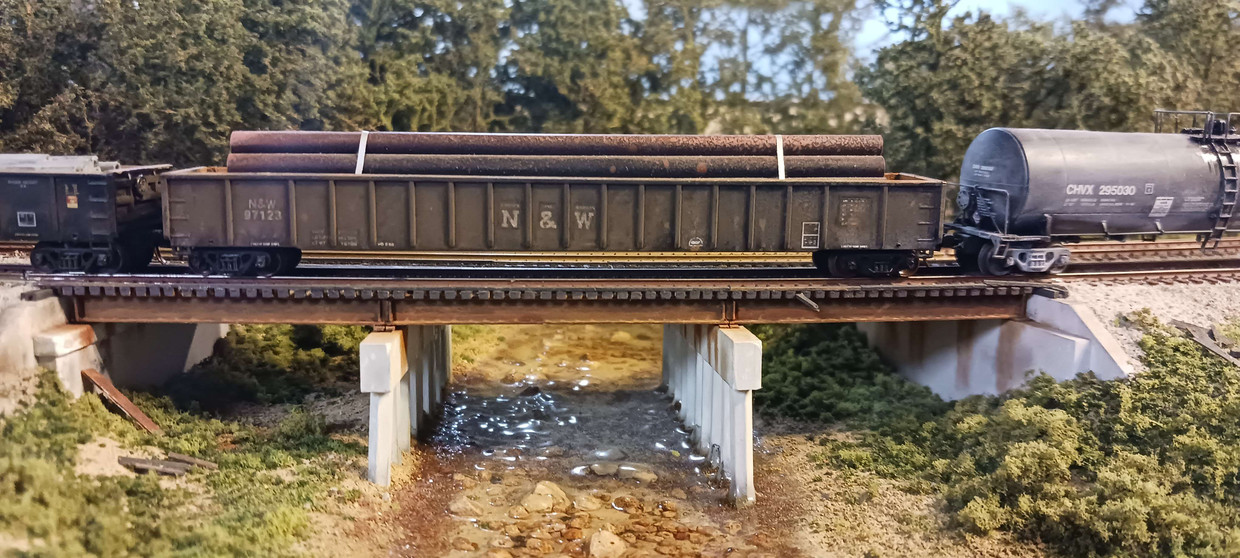Article 5: Showcasing Your Weathered Model Railroad
Model railroading is an art form that brings miniature landscapes to life. The attention to detail, craftsmanship, and creativity that goes into building a model railroad is nothing short of remarkable. And one of the most fascinating aspects of this hobby is weathering. Weathering gives your model railroad a realistic, lived-in look, as if it's been through the trials of time. In this article, we'll explore the art of weathering and how to showcase your weathered model railroad effectively.
The Art of Weathering
Weathering is an essential skill in the world of model railroading. It involves adding realistic wear and tear to your miniature trains, tracks, and structures to make them look like they've been in service for a while. The goal is to create a sense of history and authenticity in your layout. Here are some key tips for mastering the art of weathering:
- Research and Reference: Before you start weathering your models, research the specific era and location you're modeling. Look at photographs and reference materials to understand how the real trains and structures in your chosen era looked after years of use.
- Start with Basics: Begin with simple weathering techniques such as applying chalks, dry brushing, or washes. These methods are easy to control and provide excellent results for beginners.
- Practice Makes Perfect: Experiment on spare models or scrap pieces before working on your prized collection. Practice helps you refine your skills and develop the right techniques for your layout.
- Realism is Key: Pay attention to the details. Rust, dirt, grime, and grease all play a part in making your models look realistic. Don't overdo it; subtlety is often more effective.
Showcasing Your Weathered Models
Once you've weathered your models to perfection, it's time to showcase them in your model railroad layout. The way you display your weathered models can greatly enhance the realism of your layout. Here are some suggestions on how to effectively showcase your weathered models:
- Strategic Placement: Consider the placement of your weathered models within the layout. Put older, more weathered locomotives and rolling stock closer to the maintenance yards and industrial areas. This will create a natural flow of wear and tear.
- Scenic Elements: Incorporate scenic elements like abandoned buildings, decaying infrastructure, and overgrown vegetation around your weathered models. These additions provide context and enhance the feeling of an aged, well-lived environment.
- Lighting: Use lighting to your advantage. Shadows and highlights can make the weathering on your models pop. Consider subtle, directional lighting to accentuate the details of the weathering.
Telling a Story with Your Layout
Your weathered models aren't just for display; they're characters in the story your layout tells. Every element should work together to create a narrative that captures the essence of a particular time and place. Here's how you can use your weathered models to tell a compelling story:
- Scenery Planning: Develop a backstory for your model railroad, including the history of the railroads, the communities they serve, and the industries they support. This will guide your weathering choices and layout design.
- Events and Incidents: Create scenes on your layout that tell a story. Use your weathered models to depict significant events or incidents from your chosen era. These can be accidents, maintenance activities, or unique moments that add depth to your layout.
- Engage Viewers: Encourage viewers to interact with your model railroad. Include signs, informational plaques, or even a narration that explains the history and significance of various elements on your layout.
In conclusion, weathering your model railroad is an art that adds depth, character, and realism to your miniature world. By mastering the art of weathering and effectively showcasing your weathered models, you can create a compelling and historically accurate model railroad that captures the imagination of all who view it. Remember that storytelling is the heart of any great layout, and your weathered models are the characters that bring that story to life.
Cover photo taken by Jason Stiles featuring Jon Percy's N scale layout
Recent Posts
-
Prototype Spotlight: GE ES44AC — Modeling a Modern Freight Workhorse
Prototype Spotlight: GE ES44AC — Modeling a Modern Freight Workhorse Published 2025-09-29• 8–10 min
-
How to Build a Realistic Freight Yard: Flow, Trackwork, and Car Management
How to Build a Realistic Freight Yard: Flow, Trackwork, and Car Management Published 2025-09-25 • 8
-
Scenery Basics: From Foam to Foliage — A Quick, Budget-Friendly Guide | Midwest Model Railroad
Modeling Tutorial Scenery Basics: From Foam to Foliage Published 2025-09-23 · 7–9 minute read Li




